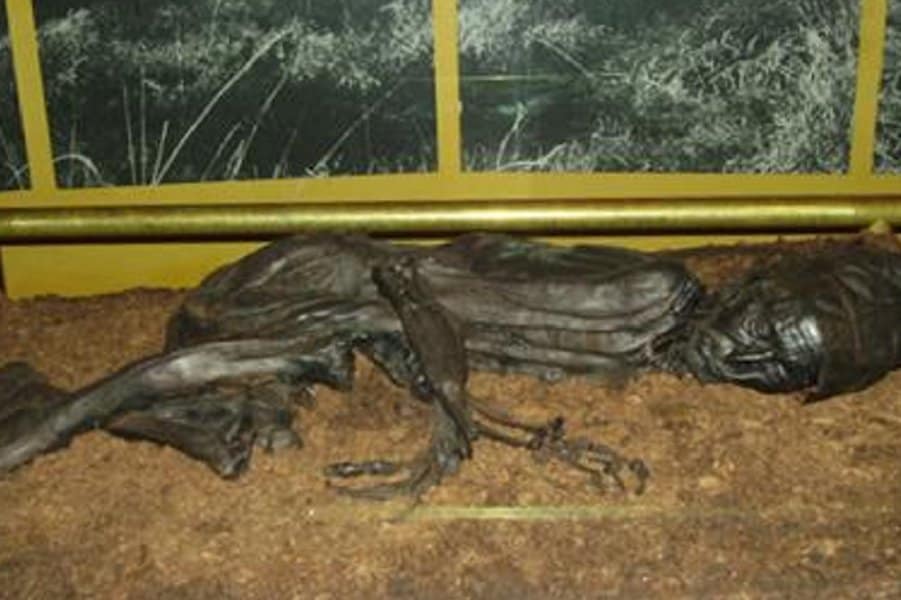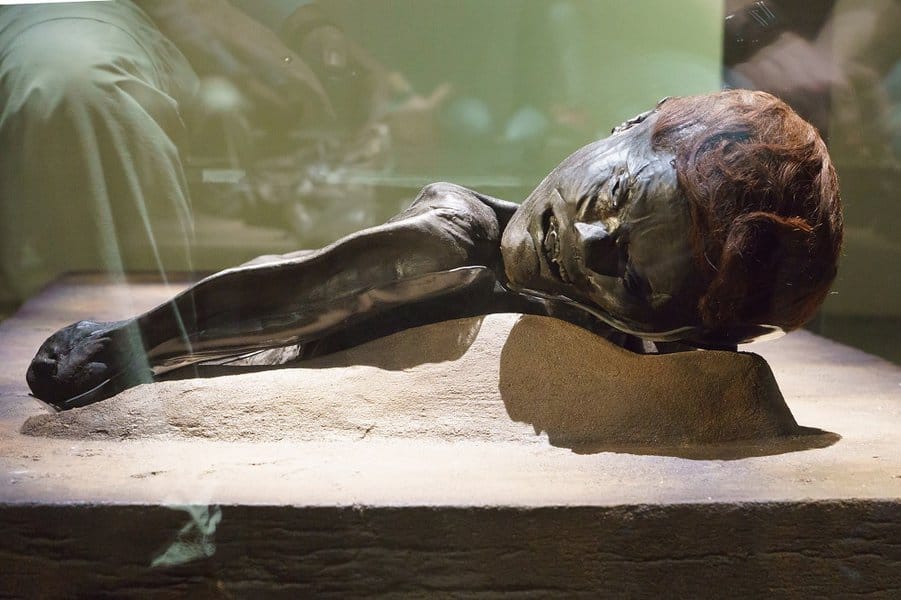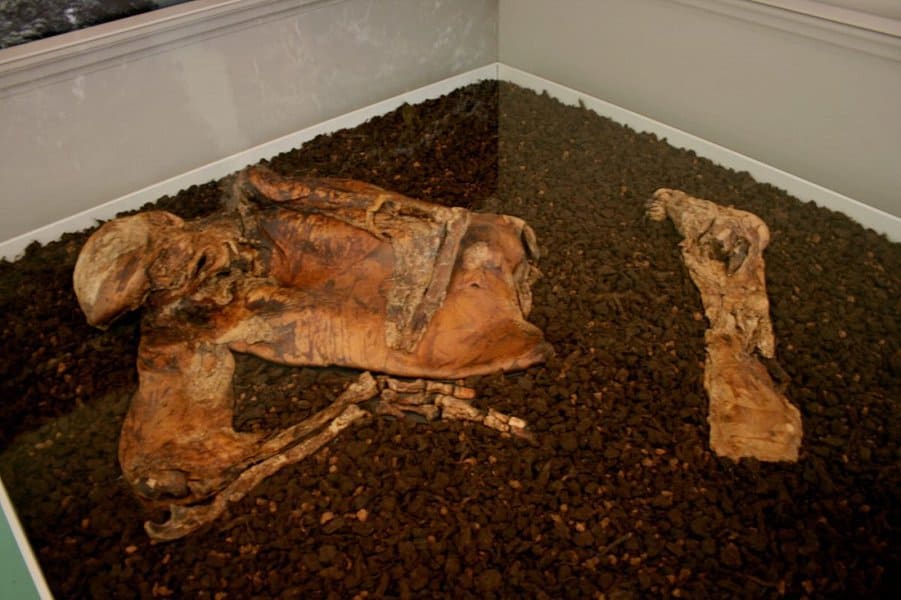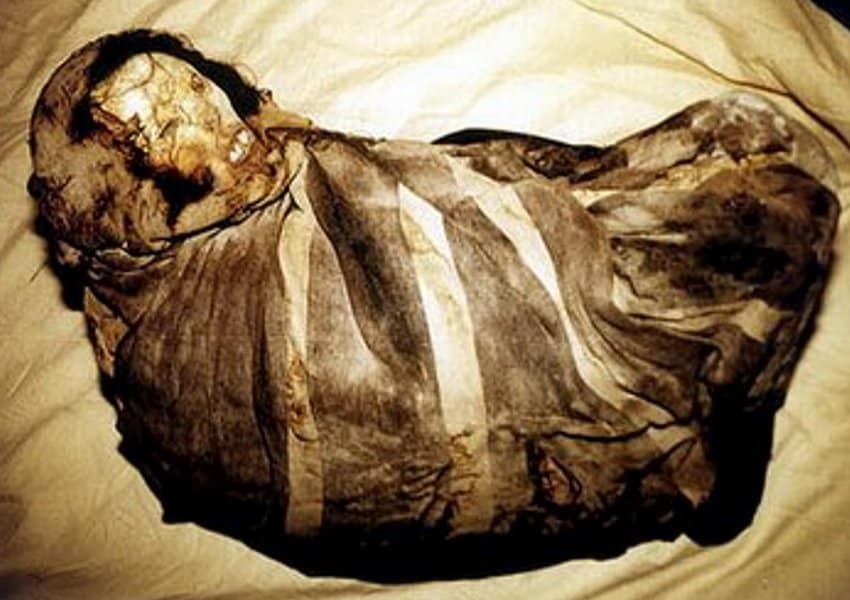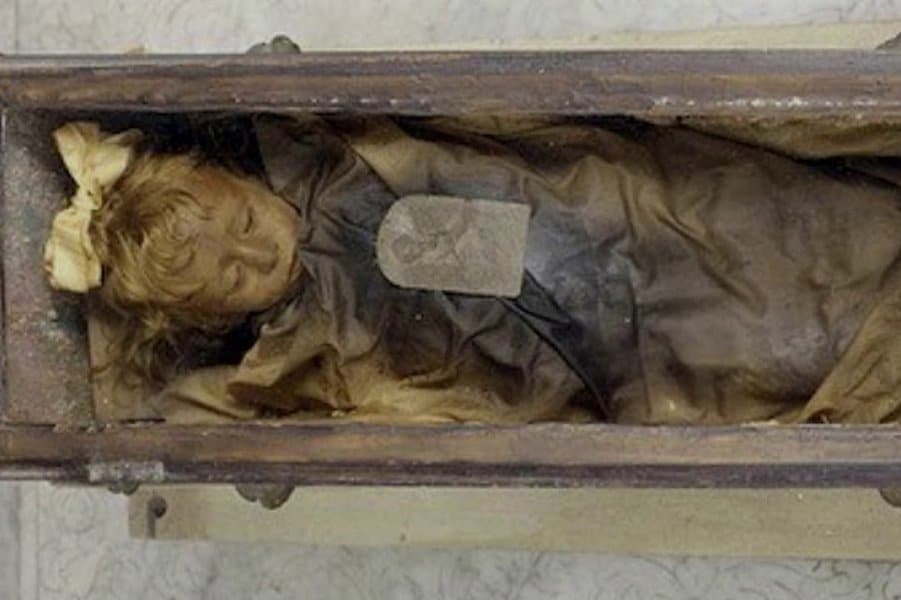
Learn Sicilian/YouTube
10 Famous Preserved Bodies Throughout History
Death is an inevitable part of life. While the soul discovers the truth about the afterlife, the body remains on Earth. In modern times, funeral homes can maintain bodies for long periods, but in most cases, bodies eventually decompose, unless they are cremated, in which case they are reduced to ash in seconds.
Incredibly, throughout history, there have been several accounts of perfectly preserved bodies remaining in excellent condition. Many of these bodies are centuries old yet have managed to stay relatively intact.
From Ancient Egypt to the old west and even the Iron Age, the discovery of these mummified bodies have excited scientists and other researchers looking for answers about how the body decomposes after death. This article looks at some of the most famous preserved bodies through the ages and how they managed to stay so well maintained.
1. Rosalia Lombardo

Learn Sicilian/YouTube
One week before her second birthday on December 6, 1920, Rosalia Lombardo died from pneumonia caused by the Spanish flu. Her father, Mario Lombardo, was devastated and grief-stricken. He approached embalmer Alfredo Salafia to preserve and place her body in the Capuchin catacombs in Palermo, Sicily. Salafia used a unique mixture to perfectly preserve the “sleeping beauty’s” body.
How the body remained intact was a mystery until 2009 when the curator of the catacombs discovered a note from Salafia. On it was scribbled the formula and ingredients he used to preserve Lombardo, with glycerin, salicylic acid, alcohol, formalin, and zinc salts all part of his embalming concoction.
The body now lays in a casket inside a hermetically sealed glass chamber with nitrogen gas to stop decomposition in the same catacombs.
2. The Tollund Man
On May 8, 1950, peat cutters thought they discovered the body of a recent murder victim in the Bjældskovdal peat bog in Denmark. Archeologists were quickly called in when authorities realized it was a well-preserved body from centuries ago that appeared recently deceased. The Tollund Man was likely from the 5th century and died at some point between 405 and 380 BC.
The bog body was believed to be from the Pre-Roman Iron Age in Scandinavia. Scientists also think he died by sacrificial hanging instead of a criminal execution. The lack of oxygen and cold climate combined with the acid in the peat to preserve the body until its discovery. After scientists separated the head, the body quickly deteriorated. The head with a replica body is on display at the Silkeborg Museum in Denmark.
3. King Tutankhamun
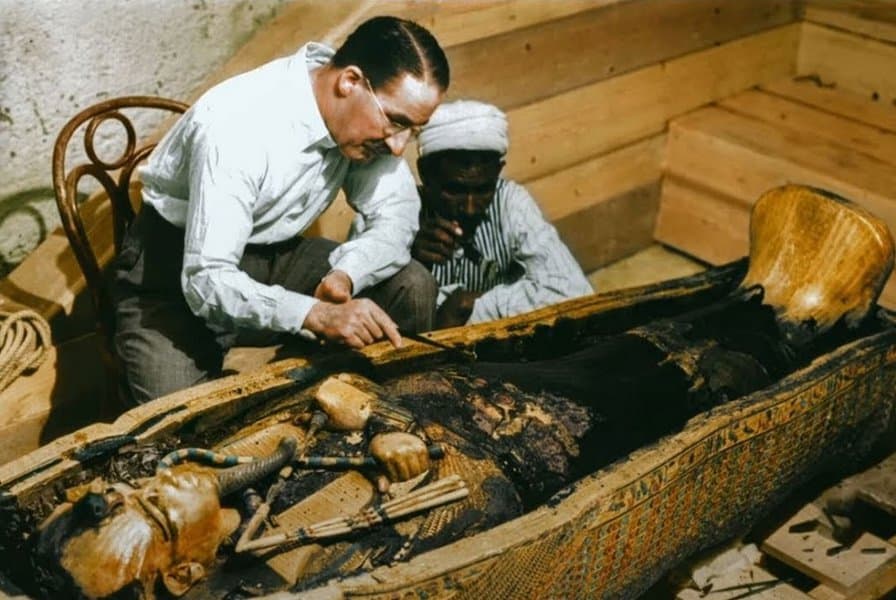
National Geographic/YouTube
Tutankhamun, or King Tut, was the 13th pharaoh of the 18th Dynasty of the New Kingdom of Egypt. He ascended to the throne at age nine, dying roughly ten years later. After his funeral, his followers encased his body in his royal tomb. The mummification process began with 15 days of purifying the body, followed by 40 days of drying and 15 days of wrapping the body with bandages, totaling 70 days.
Tutankhamun’s mummified body sat in the tomb for over 3,300 years until Egyptologist Howard Carter discovered the burial site on October 28, 1925. Two years after archaeologists discovered the grave in the Valley of the Kings, Carter found Tut’s body perfectly intact, still wearing his iconic death mask. After the initial examination, archaeologists put the body back in the tomb for display.
4. The Grauballe Man
In the 3rd century BC, the Grauballe Man lived in a village in present-day Jutland, Denmark. At some point during the Germanic Iron Age, someone murdered the Grauballe Man by slitting his throat from ear to ear. It appears to be a sacrificial killing due to the body’s positioning. The Grabuballe Man’s body lay in the peat bog for nearly two millennia before being discovered on April 26, 1955.
It was a crucial find and vital insight into life during that time. Scientists assumed his body was around 65 years old before realizing the peat bog had preserved it for centuries. After going on display briefly, scientists worked tirelessly to preserve the entire body. The Grauballe Man was put on display at the Moesgaard Museum in Denmark where it remains today.
5. Elmer McCurdy
On October 7, 1911, outlaw Elmer McCurdy went out in a blaze of glory during a gunfight in Oklahoma’s Osage Hills. After his death, his body went to the local funeral home. When nobody claimed McCurdy’s body, the undertaker used a special arsenic preservative for embalming. He then put the body on display, charging a nickel to get a glimpse of the “Bandit Who Wouldn’t Give Up.”
Five years later, a man claiming to be McCurdy’s relative conned the funeral home into giving him the corpse. For 60 years, McCurdy’s mummified corpse went on a strange journey appearing at carnivals, wax museums, and haunted houses. Somehow the body ended up as a feature of California’s Long Beach Pike amusement park funhouse. By that point, everyone assumed it was a poorly constructed mannequin.
When the hit series The Six Million Dollar Man was filming scenes at the funhouse, a crew member was shocked when they moved the “mannequin” and McCurdy’s arm broke off. In 1977, McCurdy finally got a proper funeral and burial at the Summit View Cemetery in Oklahoma.
See more about - 12 Amazing Facts About The Preserved Pompeii Bodies
6. Lindow Man
At the Lindow Moss in Cheshire, North West England, peat cutters discovered the perfectly preserved body of the Lindow Man. Jokingly known as “Pete Marsh,” they found his body in the peat bog on August 1, 1984. While it’s tough to pinpoint the exact time he was alive, archeologists believe he existed between 2 BC and 119 AD. The peat bog preserved the body so well that scientists approximate his age to be roughly 20 years old at the time of his death.
The Lindow Man also had manicured fingernails, healthy teeth, brown hair, sideburns, a trimmed beard, and a mustache. Tragically, it appears he was the victim of a ritualistic and violent death. After the brutal and violent killing, the murderers left the body in the peat bog faced down. Continued searches in the area uncovered other body parts scattered around the location, with some theorizing they may have belonged to the Lindow Man.
7. Juanita, the Ice Maiden
Roughly 500 years ago, a large group ascended to the summit of Mount Ampato in Peru. The Incans then performed a ritual, sacrificing a young girl to the Ampato God to prevent avalanches and supply water. Their prayers workers, as the eruption of Mount Sabancaya melted the snow and ice on the mountain, which in turn preserved the young girl for centuries. On September 8, 1995, another eruption caused more snow to melt, revealing the young girl’s nearly intact body.
Known as Juanita, “The Ice Maiden,” the ice and snow perfectly preserved her skin, hair, clothing, blood, and internal organs. She appeared to be roughly 12 to 14 years old and possibly from a noble family based on her clothing. She died from a blow to the head.
The incredible discovery and preservation of the body gave a rare glimpse into the Incan civilization and its traditions. She has since been on display in the Catholic University of Santa María’s Museum of Andean Sanctuaries.
8. Two Men From Pompeii
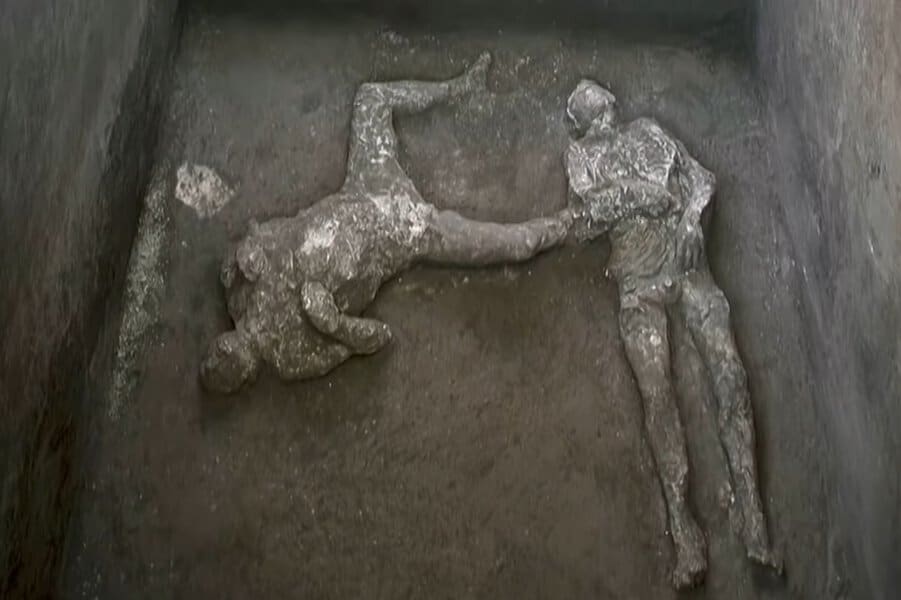
Voice of America/YouTube
In 79 AD, Mount Vesuvius erupted, covering the city of Pompeii under hot lava, ash, and pumice. Located near Naples, Italy, it remained buried under 20 feet of ash until its discovery in 1748. Archaeologists quickly realized the lava and ash from the eruption had preserved the entire city. One of the most famous finds was two perfectly preserved bodies in a villa just outside of Pompeii.
The two men died more than 2,000 years ago during the eruption of Mount Vesuvius. Based on clothing and the state of the villa, one of the men appeared enslaved to the wealthier man. It also provided a snapshot of two people enduring immense pain as they died and were buried under six feet of ash.
9. John Torrington
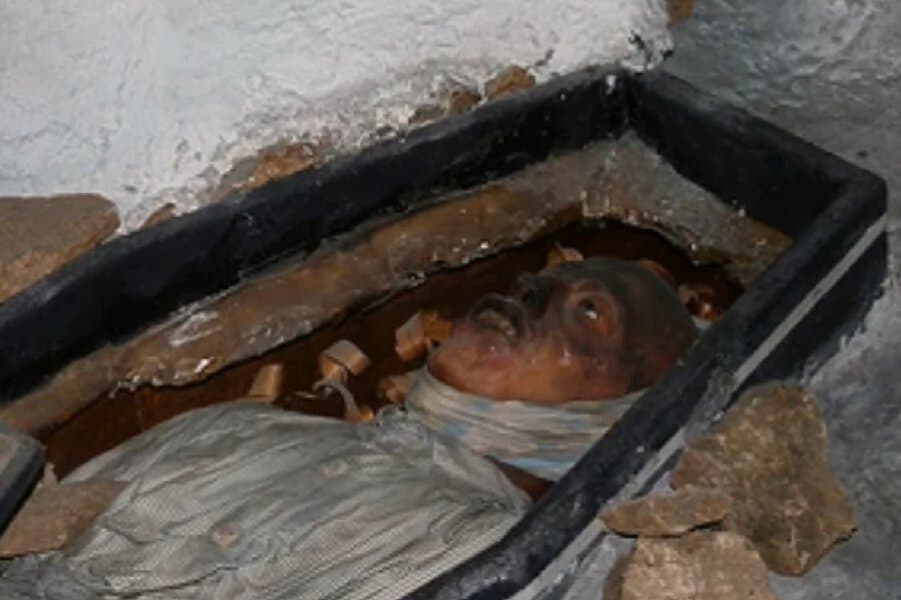
Archaeosoup/YouTube
Royal Navy stoker John Torrington joined Sir John Franklin’s 1845 expedition to find the Northwest Passage and explore present-day Nunavut, Canada. Tragically, each member of the crew mysteriously died before returning home. Torrington was the first to die in early 1846, with the crew burying his body on Beechey Island in Nunavut. After a lengthy search, rescuers discovered Torrington’s grave and two others near an abandoned wooden hut.
In 1984, anthropologist Owen Beattie exhumed Torrington’s body to get to the bottom of his and the crew’s mysterious death. He was amazed to find Torrington’s body in excellent shape, similar to its appearance at the time of his death. The perfect preservation allowed Beattie and his team to examine the mummified body, discovering lead poisoning and pneumonia to be the cause of his demise. Beattie theorized that the crew became ill due to lead poisoning from the soup cans they were feasting on during the trip.
10. Vladamir Lenin
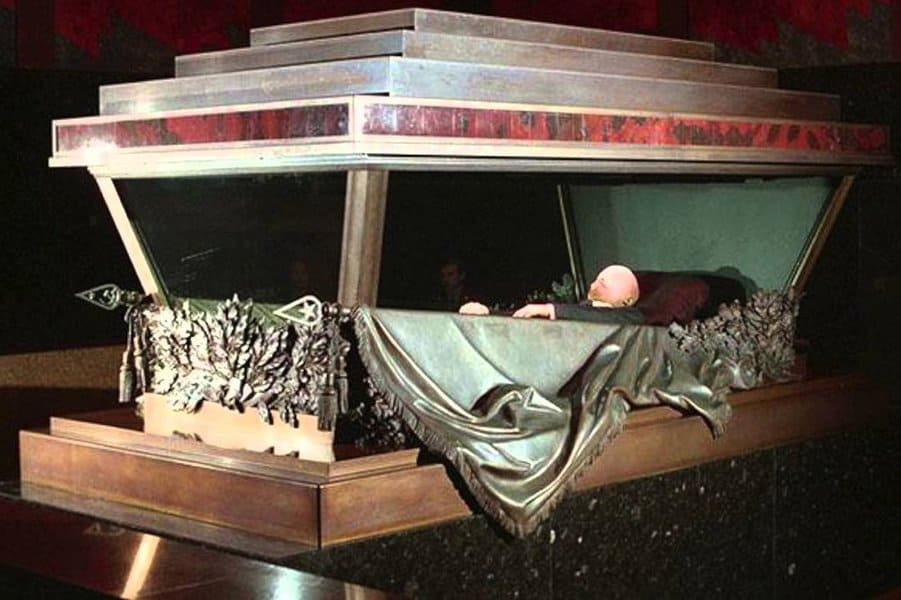
Hanisah Rahman/YouTube
The controversial and polarizing Vladamir Lenin was the founder and first leader of the Soviet Union. The commander of the communist movement played a vital role in the October Revolution and divides opinion among historians.
On January 21, 1924, Lenin died due to several complications after falling into a coma. Despite the severely cold weather, thousands of Russians attended his funeral. Against the wishes of his widow, Nadezhda Krupskaya, the government embalmed Lenin’s body for long-term display.
Since 1924, his body has been in Lenin’s Mausoleum in Red Square in Moscow. The Soviet government, and now the Russian government, dedicates painstaking effort and funds to preserve Lenin’s body to this day, which is still on display in Red Square. Since 2018, there have been discussions about burying Lenin’s body by 2024 and replacing it with a rubber statute in Lenin’s Mausoleum.

